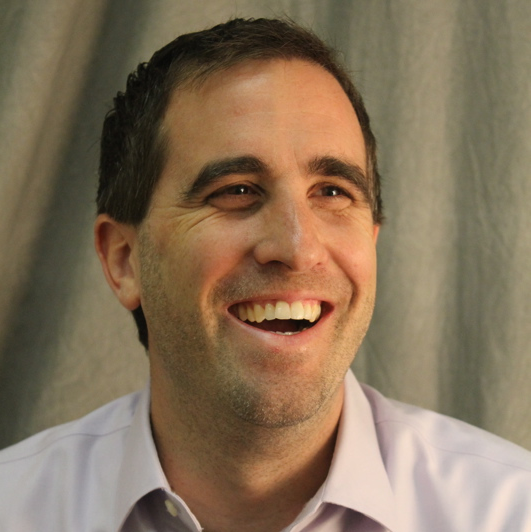Overcoming Adversity
Overcoming Adversity
Looking for some inspiration during these tough times? Think back to your math class.
By Gabriel Lucas, Principal, 12M Recruiting
One of the reasons I love the field of mathematics is that it presents so many opportunities for learning to overcome adversity. With all that's going on in our world today, I’ve been thinking a lot about math lately.
Take, for example, planning for the future. And I don’t mean a future that is years away, but rather just a few months from now. I’ve attended many webinars these last few weeks with hundreds of educators trying to figure out how to open school in the fall. Two things I hear a lot are:
- The number of unknowns right now is vast.
- Fitting the “new normal” into “old operations” is daunting.
At times like these, I turn to my days as a math instructor for three wise maxims.
Math Lesson #1: When you’re stuck, list everything you know.
 The other day, my 11-year-old daughter asked for help to find the angle of a triangle. I told her what I used to advise my former math pupils: when you are stuck, don’t worry about all the unknowns at first. Instead, write down everything you do know. If nothing else, this simple act keeps external anxieties at bay while you refocus and grab control of the situation.
The other day, my 11-year-old daughter asked for help to find the angle of a triangle. I told her what I used to advise my former math pupils: when you are stuck, don’t worry about all the unknowns at first. Instead, write down everything you do know. If nothing else, this simple act keeps external anxieties at bay while you refocus and grab control of the situation.
Right now, I see a lot of school leaders feeling paralyzed because the future is so uncertain. But as this spring semester showed, most schools can leverage existing resources to make transformative changes. In fact, multiple school heads have recently shared with me that their previously struggling technology departments are shining beyond expectations during this period of remote learning.
Suppose we had been given a little advance warning in the fall that world changes would be imminent. How many school communities would have been stuck trying to plan for the unknown? Yet here we are today, having made a massive switch on a dime using only what we had in our tool bags back in March.
As an example of how to approach the fall, consider what Viewpoint School in Calabasas, CA is doing. With deft leadership from Anneke Emerson, Chief Innovation Officer, the school’s freshly minted team of “Remote Learning Fellows” has begun categorizing tools and technologies that have proven effective for learning across a clever matrix. On one axis are different grade levels, and on the other axis are six teaching methodologies that are now relevant to the community: synchronous instruction, asynchronous instruction, differentiated instruction, assessment, feedback, and well-‐being. This “framework of knowns” will guide planning for this summer’s professional development and next year’s operations. The moral is simple: there may be a more elegant formula out there — but in times of crisis getting to a solution is often what counts the most.
Math Lesson #2: Mental models are ephemeral. Don’t panic.
Sometimes known tools are not sufficient. At that point, it’s time to get creative. But often a new solution requires an entirely new mental model, which can be a difficult but necessary pill to swallow.
This transitional hurdle happens a lot in math. Every three months or so, my youngest child declares a new “largest number.” Last week it was 1,009. I talk about infinity, but to her it’s as mysterious as the heavens above. Sadly, the vast majority of my students who struggled believed that math was steeped in magic rather than logic. They failed to see learning math as a lifelong journey and thus the need to evolve their thinking over time. Instead, they longed for the days of fewer operations and simpler paradigms.
I would argue that education has fallen into this rut. Too many school communities have become fearful of the unknown because they are obsessed with managing existing constraints: schedules, classrooms, and departments, just to mention a few. But what if a new challenge were seen not as yet one more constraint to be shoved into the current equation, but rather the final impetus to think truly differently — and explore a new dimension? Better yet, what if a new approach could simultaneously solve historical challenges?
Take, for example, the herculean task of planning to deliver remote and in-‐person instruction simultaneously, given that…
- …students might suddenly be absent for days at a time while in-‐person classes continue; and
- …international students might face insurmountable travel restrictions.
Most of the time, the solutions I’m hearing involve a myriad of cameras and live stream strategies inspired by the Super Bowl. Solutions like this feel as permanent as my daughter’s moving the largest number from 1,009 to 10,500.
Why not take this time of crisis, uncertainty, and dare I say, exploration, to try something truly bold? For example: what if a traditional school made the seemingly irrational decision to hire one or more amazing teachers next year not in the vicinity of its physical location? Call them a squad of fully online teachers. Consider a school in expensive San Francisco finally having its choice of math and computer science teachers with amazing tech chops — from rural markets. Or imagine a New England boarding school finally landing a trilingual foreign language teacher—living in Asia.
Do you really think those remote employees would be idle next year? Tech companies don’t; they’re all in competition to see who can stay home the longest. Ironically, truly remote instruction has already started, with many faculty having scattered far — very far — this spring while they still teach the locals.
At worst, this might be a failed one‐year experiment. Or, maybe it’s a solution that slowly diminishes when the virus does, too. But what if something new is proven? What if brick-and-mortar schools realize consumers want hybrid learning to stay? What if online teaching positions to traditional schools prove attractive to young students turned off by expensive housing markets and long commutes? What if schools running barely on the margin create entirely new distance-learning revenue streams? What if two schools succeed at sharing the same all-star teacher?
Math Lesson #3: Finding a solution is the perfect time to seek a new problem.
Right now, I’m hearing a lot of discussion from school leaders wondering how to fit this new normal into an old paradigm. Yes, as the first lesson tells us, it’s important to start with what we have and build from there. And as the second lesson tells us, sometimes we need to embrace a cycle of deconstruction and reconstruction when we discover that our historical models are no longer sufficient for current times.
But the final lesson is a simple reminder that our minds were designed for exactly these times of great adversity. I remember attending a graduate analysis class, and every time my classmates and I solved a proof, we wanted to toss our books away to punish the math gods for the torture they had just inflicted on us. But as our professor would continually remind us, “As soon as you prove something possible, press on. With that new knowledge and a sharpened mind, those are exactly the right conditions to seek out new problems to solve.”
This spring we proved something amazing is possible. Fall is not a time to retreat. It’s time to think bigger and bolder. Infinity, here we come!
 Gabriel Lucas is principal of 12M Recruiting (www.12MRecruiting.com), an international firm helping schools, nonprofits, and other mission-‐aligned organizations hire for cabinet-‐level and executive-‐level leadership positions across all areas of operations.
Gabriel Lucas is principal of 12M Recruiting (www.12MRecruiting.com), an international firm helping schools, nonprofits, and other mission-‐aligned organizations hire for cabinet-‐level and executive-‐level leadership positions across all areas of operations.
